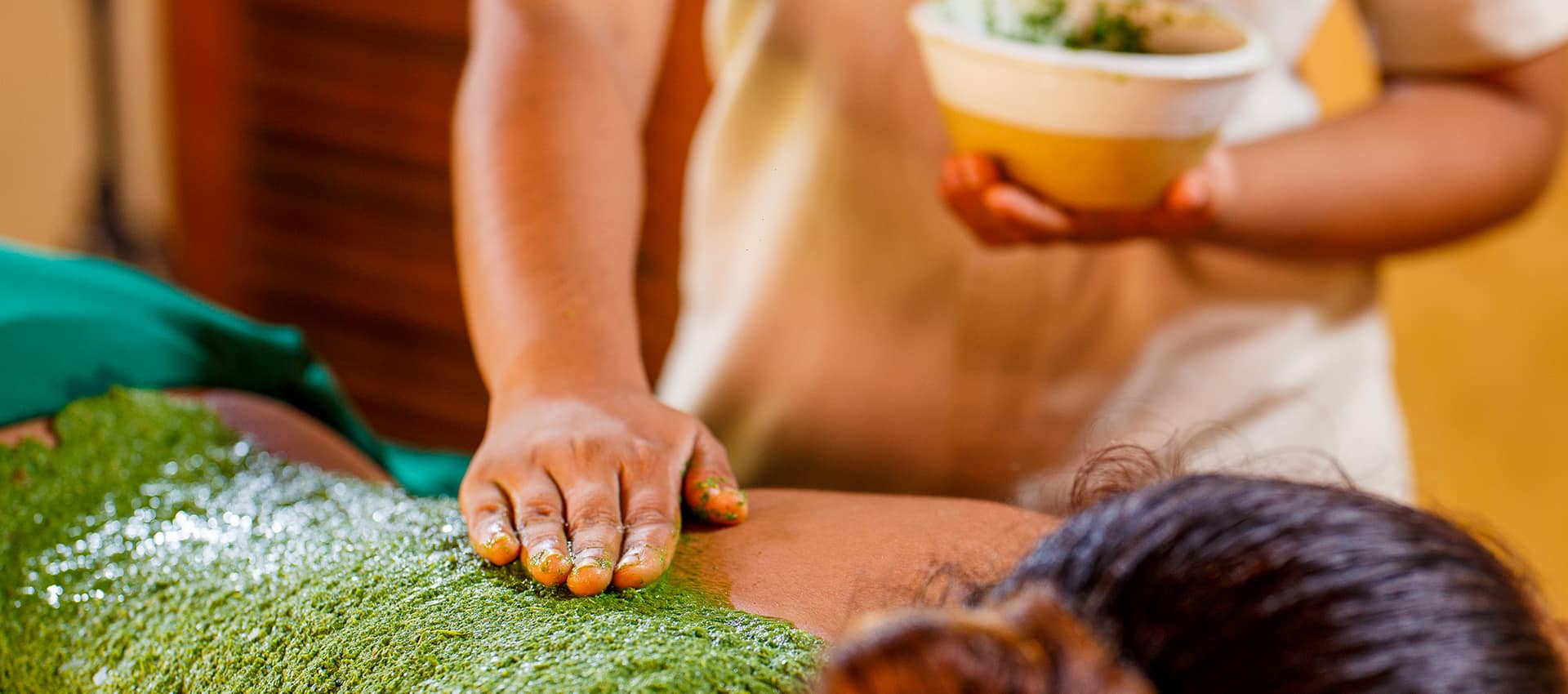Ayurveda in Sri Lanka
“Ayurveda” is not only a form of medication – it is a complete way of life known to generations of Sri Lankans for over 3000 years. It is a gentle method of treating the root causes of illness in both mind and body.
The health conscious today are searching for effective alternatives to the spiraling costs and side effects that at times result from the use of modern medicine. Sri Lankans, in the last couple of millennia, has made use of the “user-friendly and traditional medicine – Ayurveda” which over 75% of the island’s population depend on because of its reliance on natural plants, herbs and oils. Known as nature’s way to good health, the efficacy of “Ayurveda” has been proved by 3,000 years of successful caring and curing.
What is Ayurveda….?
It is an ancient system of medicine developed in our part of the world, long before the “father of medicine”, Hippocrates, was even born. The name comes from two conjoined Sanskrit words “Ayuh” (life) and “Veda” (science or knowledge). It’s basically a science of healthy living. Ayurveda has two aims – to preserve health and to cure a bodily afflicted disease.
One of the fundamental beliefs of Ayurveda is the doctrine of “Tri Dosha” or the Three Vital Forces – Vayu, Pitta, and Kapha. Generally translated into Wind, Bile and Phlegm, a more accurate interpretation of Vayu is the transmission of energy within the body; in modern medical terms, nerve impulses, muscle contraction and hormonal activity.
Pitta may not be confined to bile but signifies the whole scope of metabolism and internal heat production while Kapha means mucus, often described as “The Protective Fluid”.
The modern concept of mucus as an antibody containing a liquid which coats and protects internal linings of the body seems to fit in with Ayurvedic thinking. When the three, “Doshas” are balanced, the body is in good health. When this equilibrium is disturbed and the balance of these complementary forces become unbalanced and upset, illness takes over.
Ayurvedic practitioners study the patient as a whole with the object of restoring balance, getting to the root of the problem and treating it. Local folk have been known to say that while western medicine classifieds germs and attempts to destroy them, Ayurveda classifies human beings and attempts to save them. As per history, Ayurveda embraces all living things, animate and inanimate. It is divided into three main branches: Nara Ayurveda dealing with human life, Satva Ayurveda dealing with animal life and its diseases, Vriksha Ayurveda the science dealing with plant life its growth and diseases. When one goes deep into the science of Ayurveda, it is clear that this is not only a system of medicine but a way of living for complete positive health and spiritual attainment.
Ayurveda believes that the highest wealth one receives is health. Righteous Life (Dharma), Wealth (Artha), Fulfillment of Desires (Kama) and Attainment of Salvation (Moksha), all these four factors depend on a healthy life. Swasthya (Health) is defined as (a) Dosha Dhatu Samya (well-balanced metabolism) and (b) Prasanna Atma, Indriya, Manah (a happy state of the being, senses and mind). The five organs of perception Gana Indriya (smell, taste, sight, touch, and hearing) while the organs of action Karma Indriya namely mouth, hands and feet, organs of excretion and reproduction. The origin of Ayurveda dates back to the Vedic Era. Some historians say that Ayurveda is a part of Atharva Veda. In Atharvaveda too there are hymns which mention medicine for various diseases. Medicines like Accorus Calamus, Phylanthantus embolic are mentioned.


